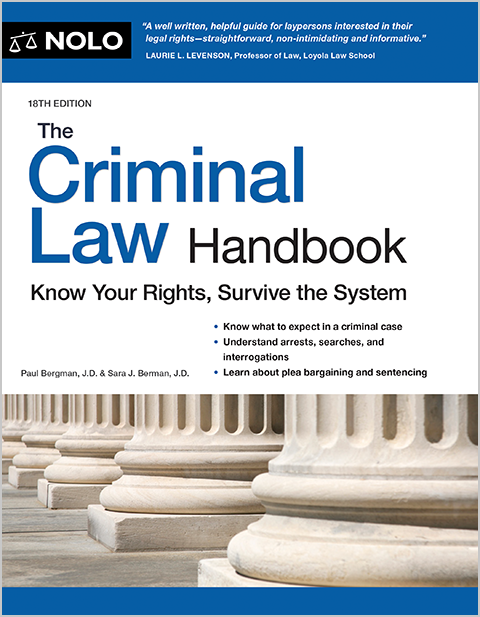When considering whether you qualify for disability, Social Security needs to evaluate all your medical conditions together.
Many people who apply for disability benefits (SSDI or SSI) have several different medical issues that prevent them from working. Social Security is required to consider the combined effects of all your impairments when determining if you qualify for disability benefits. So it's important that you mention all your medical conditions—including those that are relatively minor compared to your more serious health concerns—when filling out your disability application.
- Social Security's Process When Considering Disability for Multiple Conditions
- Severe and Non-Severe Impairments
- The SSA Impairment Listings of Conditions That Are Automatically Approved for Disability
- How Multiple Impairments Affect Your Residual Functional Capacity
- Applying for Social Security Disability Benefits
Social Security's Process When Considering Disability for Multiple Conditions
The Social Security Administration (SSA) assesses the combined effects of your medical problems at almost every step of the five-step sequential evaluation process for determining disability. At step one, the SSA is only checking to see whether you're performing substantial gainful activity by earning more than about $1,620, which doesn't involve a review of your medical records.
Assuming you aren't working above the substantial gainful activity amount, the SSA will move on to the next stage of the process and begin examination of the medical evidence in your file. This evidence will play a significant role at every remaining step in the sequential evaluation, with the agency looking at how your multiple conditions interact with each other and interfere with your daily activities.
Severe and Non-Severe Impairments
At step two of the sequential evaluation, the SSA will determine whether you have a severe impairment or a severe combination of impairments. Severe impairments substantially interfere with your ability to perform work-related physical and mental tasks. Non-severe impairments, on the other hand, are slight abnormalities that only have a minimal effect on your ability to work. For example, somebody with carpal tunnel syndrome has a severe impairment, but somebody with a pinky sprain does not.
Although a non-severe impairment can't be disabling by itself, it can exacerbate the symptoms of other conditions, both severe and non-severe. So even if you don't have an impairment that's severe on its own, if you have a severe combination of impairments, you can still qualify for disability. You could, for instance, have a twisted ankle, mild depression, and nearsightedness that—when taken together—substantially limit a work-related activity, even though none of those conditions by themselves would be considered severe.
Furthermore, because the SSA doesn't pay "short-term" disability, you can only qualify for benefits if your conditions have lasted (or are expected to last) for at least 12 consecutive months. But if you have multiple related impairments, none of which last 12 months on their own, you can combine them to meet the durational requirement.
The SSA Impairment Listings of Conditions That Are Automatically Approved for Disability
At step three of the sequential evaluation, the SSA needs to determine whether your condition meets the requirements of a listing in the "Blue Book." Social Security's Blue Book contains hundreds of serious conditions along with certain medical criteria that, when met, will automatically qualify a person for benefits.
Having multiple impairments usually doesn't affect whether you meet a listing. However, you can also qualify for disability benefits if you have multiple conditions that are medically equivalent to, or "equal," one of the listings in the Blue Book. For example, you may have diabetes and back pain that don't individually meet a listed impairment, but combined are equal in severity to listing 11.14 for peripheral neuropathy.
Equaling a listing qualifies you for disability automatically just as meeting a listing does. But the burden is on you to prove that you medically equal a listing. This is often done with a treating source statement from your regular doctor explaining how your combination of conditions equal a listing.
How Multiple Impairments Affect Your Residual Functional Capacity
At the last stages of the sequential evaluation process, Social Security needs to decide whether you're capable of performing any of your past work (step four) or any other jobs in the national economy (step five). In order to determine whether you're capable of working, the agency will first assign you a set of limitations called your residual functional capacity.
Your residual functional capacity (RFC) represents the most you're able to do physically and mentally in a work environment, despite your medical conditions. A typical RFC will address what you can and can't do in the following areas:
- exertional restrictions, such as how much weight you can lift and carry and how long you can sit, stand, and walk for
- postural restrictions, such as stooping, climbing, crouching, and bending
- manipulative restrictions, such as reaching, handling, grasping, and pressing
- mental restrictions, such as following instructions, dealing with work stress, making simple or complex decisions, and interacting with coworkers or the general public, and
- environmental restrictions, such as exposure to extreme temperatures, vibrations, or fumes.
Social Security is required to assess how all of your conditions combine when assigning you an RFC. When considering how pain limits your work abilities, for example, the agency should recognize that mental disorders, such as moderate depression, can make physical problems worse (and vice versa).
Combining multiple impairments can quickly rule out your past jobs as well as any other work. Somebody with only exertional restrictions limiting them to sit-down work might not qualify for disability if their past work was performed mostly at a desk. But somebody who has additional limitations on fine manipulation might not be able to do that desk job if it involved a lot of typing. If the manipulative limitations are restrictive enough, Social Security can find that no other jobs exist that can be done with that RFC, and award the disability claim.
Applying for Social Security Disability Benefits
There's no limit to the amount of times you can apply for Social Security disability, but claims examiners and judges often look askance at claimants who file too many applications. One application is enough to cover your multiple medical conditions, and if your application is denied, you can appeal. When you're ready to file, you have several convenient options to choose from:
- File online at Social Security's website.
- Speak with a representative at 800-772-1213 (TTY 800-325-0778 if you're deaf or hard of hearing) from 8 a.m. to 7 p.m., Monday through Friday.
- Schedule an in-person appointment at your local Social Security field office.
You might also want to consider hiring an experienced disability attorney to help you with your application. While you don't need a lawyer to file your initial application or any appeals, having a representative can greatly increase your chances of success. Your attorney can gather your medical records, handle communications with Social Security, and write a persuasive brief on your behalf to a disability judge.
- Social Security’s Process When Considering Disability for Multiple Conditions
- Severe and Non-Severe Impairments
- The SSA Impairment Listings of Conditions That Are Automatically Approved for Disability
- How Multiple Impairments Affect Your Residual Functional Capacity
- Applying for Social Security Disability Benefits

